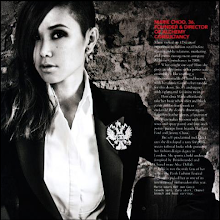These are three gastronomic delights that
are uniquely Kyoto and you must not miss when you are there.
One is the famous Japanese confectionary that is unique to Kyoto named nama yatsuhashi, which caught my attention for they look like triangular wantons (Chinese dumpling) but have a mochi-like texture wrapped around azuki (red bean) paste.
One is the famous Japanese confectionary that is unique to Kyoto named nama yatsuhashi, which caught my attention for they look like triangular wantons (Chinese dumpling) but have a mochi-like texture wrapped around azuki (red bean) paste.
They make a great
souvenir and gift, and come in several flavoured skins ranging from green tea
to cinnamon.
One has not been to Kyoto if one has not tried
Malebranche’s okoicha langue de chat cookies. Those who had the chance to
savour it will tell you it is worth visiting Kyoto just for it, since the
company does retail outside of Kyoto and the shelf life of these delish sweet
treats is only 15 days. They do ship within Japan, but that is if you can
navigate through the online store in Japanese.
Langue de chat literally means cat's tongue in French and what makes Malebranche's version so sought after is the special green tea wafers that sandwiched the piece of white chocolate.
Not just any ordinary green tea, but premium green tea selected by a tea appraiser and a master tea maker form the Uji Tawara region in Kyoto, which is considered the birthplace of Japanese green tea.
They are not cheap at about 630yen for a small pack of 5 pieces, but leaving Kyoto without trying them will leave you with much regret.
Langue de chat literally means cat's tongue in French and what makes Malebranche's version so sought after is the special green tea wafers that sandwiched the piece of white chocolate.
Not just any ordinary green tea, but premium green tea selected by a tea appraiser and a master tea maker form the Uji Tawara region in Kyoto, which is considered the birthplace of Japanese green tea.
They are not cheap at about 630yen for a small pack of 5 pieces, but leaving Kyoto without trying them will leave you with much regret.
Noodles are a staple in the Japanese diet and noodle bars are a dime a dozen across Japan. What makes Omen so special is the way the udon is being served.
Omen has three restaurants in Kyoto and its signature namesake dish consists of a bowl of special homemade udon made by experts in the north of Kyoto City, served either hot or cold to be dipped into a bowl of tsuyu dipping sauce made with fish stock.
Omen has three restaurants in Kyoto and its signature namesake dish consists of a bowl of special homemade udon made by experts in the north of Kyoto City, served either hot or cold to be dipped into a bowl of tsuyu dipping sauce made with fish stock.
A beautiful assortment of
seasonal Kyoto vegetables are served as dipping accompaniments with the meal,
alongside Chinese cabbage, radish, burdock, ginger, scallions. You can also add on tempura and other dishes to your udon if you need something more substantial, or simply if you are just a glutton like me.












ReplyDeleteThanks for sharing with us great blog about Best Restaurants.